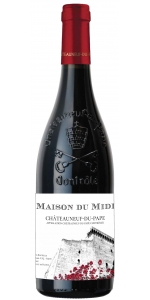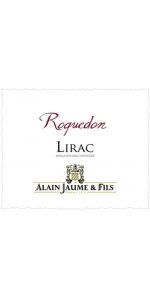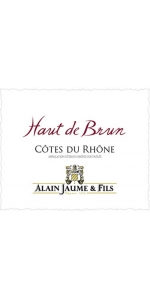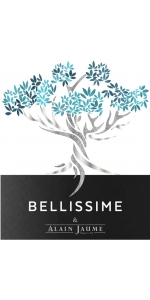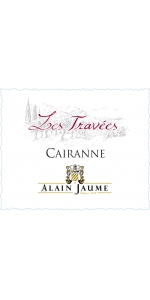Alain Jaume Lirac Rouge Roquedon 2019
6 bottles with free shipping for: $156.00
12 bottles with free shipping for: $240.00
| BUY MORE! SAVE MORE! | ||||||||||||||||||||
|
| Country: | France |
| Regions: | Rhone Lirac |
| Winery: | Alain Jaume |
| Grape Type: | Grenache |
| Vintage: | 2019 |
| Bottle Size: | 750 ml |
Alain Jaume Lirac Rouge Roquedon is made from 60% Grenache, 20% Syrah, 10% Mourvedre, 10% Carignan.
A blend of Grenache, Syrah, Mourvèdre, and Carignan grown on clay and sandy soils, mostly on terraces covered by pebble stones. Lirac is located in front of Chateauneuf du Pape, on the opposite side of the Rhone River.
Lirac Roquedon reveals an intense red garnet color and a nose dominated by a bouquet of red and black ripe fruits (kirsch and wild Blackberry). The mouth is full, with flavors of blackcurrant, liquor and spice. Tannins are both harmonious and elegant. The palate finishes with hints of liquorice and vanilla, which brings length and complexity to the wine.
Traditional wine-making in stainless still vats. Crushed and destemmed grapes. Fermentation temperature : 30°C. 18 days of vatting with pigeages. Ageing mainly in vats and about 10% in oak barrels. Bottling 15 months after the harvest.
The Alain Jaume Winery
Established in 1826 in the Northern part of Chateauneuf du Pape, the Alain Jaume Winery boasts both the exceptional terroir of the Southern Rhone Valley and a long line of dedicated winemakers. Alain Jaume works in accordance with certified organic agricultural practices for both the Grand Veneur and Clos de Sixte vineyards. They strive to let the true terrior be expressed in their wines.
The principal winemaker is Alain Jaume. His sons Sebastien and Christophe are both heavily involved with the winery in sales and marketing and winemaking respectively. The Alain Jaume winery consists of 40 acres in Chateauneuf du Pape, 50 acres in Lirac, and 75 acres of Cotes du Rhone vines. The family produces wines under two labels: Domaine Grand Veneur and Alain Jaume.
In 1320 Pope Jean XXII planted the first vines of Chateauneuf-du-Pape, but it was only in 1360 that the wines of the region first gained fame. Oddly, the wine that gave Chateauneuf-du-Pape its original reputation was the White and not the Red. The white wine was a favorite of Pope Innocent VI. The Domaine dates back to 1826, having been founded at that time by Mathieu Jaume. Since 1979, Alain Jaume has run the Domaine and now has the help of his two sons: Sebastien and Christophe.
"Popes throughout history have liked their juice, and when the papal see moved to Avignon in the 13th century, that juice was Chateauneuf-du-Pape ("the pope's new castle") made from grapes grown nearby in the Southern Rhône. The castle is a ruin now, the papal court long gone back to Rome, but the wines that bear the pope's coat of arms emblazoned on the bottle are still produced more or less according to the long-standing recipe. Not every winemaker uses all 13 of the grapes in the proscribed blend, though. At Domaine Grand Veneur, an estate that dates to 1826, Alain Jaume and his sons Sebastien and Christophe emphasize Grenache blended with Syrah and Mourvèdre."
- Los Angeles Times
"Improved Chateauneuf with very accomplished, stylish reds since the late 1990s; also very good Vacqueyras and Cotes-du-Rhône Villages." - Anthony Dias Blue's pocket guide to wine 2006
"Grand Veneur is one of the most brilliant estates in Chateauneuf du Pape as well as the force behind the negociant wines sold under the Alain Jaume label. Virtually everything they produce has merit. Some of this estate’s 2009 red wines are just hitting the market as they are bottled early to preserve their fruit and freshness. I can’t say enough about the job Alain Jaume’s two sons, Sebastian and Christophe, have done with this estate. The impeccable attention to detail in the vineyards, the meticulous vinification, and the careful bottling benefit every consumer." - Wine Advocate (#190, August 2010)
"Great bargains continue to emerge from Domaine Grand Veneur as well as from their negociant arm of the business, labeled Alain Jaume" - Wine Advocate (#195, June 2011)
"One of the best-run and highest quality estates of the Southern Rhone is Domaine Grand Veneur, now run by the younger generation of the Jaume family, Sebastien and Christophe. The brothers have done a fabulous job taking over for their quality-oriented father, Alain. These are their less expensive wines, but I will follow up later this year with my reviews of their 2010 Chateauneuf du Papes as well as the 2011s, which I have not yet tasted. They have certainly gotten a good start on their 2011 less expensive Cotes du Rhone selections. The Jaumes are some of the finest practitioners of white winemaking in the Southern Rhone and showcase that with their least expensive offerings, which are creative blends that over-deliver." - Wine Advocate (Issue #201, June 2012)
Some wines by Alain Jaume Winery:
- Alain Jaume, Ventoux, Les Gelinottes
- Alain Jaume, Côtes du Rhône Rouge, Haut de Brun
- Alain Jaume, Côtes du Rhône Villages, Rasteau, Les Valats
- Alain Jaume, Vacqueyras, Grande Garrigue
- Alain Jaume, Gigondas "Terrasses de Montmirail"
- Alain Jaume, Lirac Roquedon
- Alain Jaume, Châteauneuf-du-Pape Rouge, Vieux Terron
Any Alain Jaume wines we have in stock are listed below, if you don’t see the wine you are looking for please don’t hesitate to ask for it.
Luis Canas Reserva Seleccion de la Familia Rioja is made from 85% Tempranillo and 15% Cabernet Sauvignon
Aged for 20 months in new oak barrels - 50% French 50% American.
45 years old vines
Alcohol: 14,5º
Total acidity: 5,73 g./l.
Volatile acidity: 0,73 g./l.
PH: 3,53
Free SO2: 28 mg./l.
Reducing sugars: 1,3 g./l.
The “family reserve” from one of Rioja Alavesa’s most enduring family-run wineries. Wines destined to be the Reserva de la Familia label are made from a selection of grapes from old vines, those which combine a series of characteristics such as good orientation and exposure to the sun, and a poor soil which ensures low yields.
This wine is one of very few Rioja wines to blend Cabernet Sauvignon with Tempranillo. Bodegas Luis Cañas was granted permission by the D.O.Ca. to plant this variety as an experiment in the early 1980s.
Tasting notes
A brilliant garnet color with cherry hints on the edges.
The nose offers a complex variety of aromas that combine to bring an intense and sophisticated wine. Initially we can find very ripe berry fruits, smoky notes, raisins and liquor. After a certain amount of aeration, the cinnamon and jam notes appear and, with a little more time, the roasted and spiced aromas are noticed more clearly.
The palate is full, with a good presence of tannins, although these are offset by the glycerine like character, resulting in a fleshy sensation. Long lasting and lingering finish.
Winemaking and aging:
The grapes were cold macerated for 72 hours upon arrival at the winery. They underwent fermentation at 26º C in sealed cement tanks under constant thermal control, with the must pumped over daily. With the paste devatted by gravity, spontaneous malolactic fermentation took place after 45 days.
The wine was aged for 20 months in 50% medium toasted American and 50% French oak barrels. The barrel ageing not only adds tannins from the wood, but stabilizes the wine naturally. After the final racking, it was clarified in tanks with a small amount of natural egg white, decanted after 30 days and bottled directly without any type of filtration. Because this wine’s evolutionary cycle is quite slow, only corks of the highest quality available were used to ensure that it could be prolonged for several years.
Review:
Including 15% Cabernet Sauvignon, the Tempranillo-dominated 2019 Rioja Reserva Selección de la Familia is a crème de la crème selection that was aged 20 months in oak. Its deep purple hue is followed by a sensational nose of ripe black and blue fruits, cedarwood, graphite, smoked tobacco, and chocolate. This carries to a full-bodied Rioja with a powerful, layered mouthfeel, ripe yet building tannins, and serious length on the finish.
-Jeb Dunnuck 95 Points
Belle Glos Las Alturas Vineyard Pinot Noir is made from 100 percent Pinot Noir.
Deep garnet in color with an aromatic medley of black cherry, marionberry, ripe plum and a hint of anise. Dark fruit on the palate with flavors of wild berries, caramelized oak and cacao nibs complemented by subtle notes of vanilla, cedar and a hint of lavender and forest floor. Rich and unrestrained, this wine’s abundant fruit is beautifully balanced by firm acidity and layers of red and black fruit.
Review:
Deep and dark aromas of black cherry, sandalwood and incense make for a heady nose on this bottling. The palate is big and bold, loaded with ripe black cherry and boysenberry flavors, as peppery, incense-like spices add complexity and the texture stays lusciously creamy.
-Wine Enthusiast 93 Points
Some wines are made for casual occasions that convey not a single place and time, but an ethos unto itself. This is where the idea of THREADCOUNT was born. Throughout California's most noteworthy coastal growing regions, vines from young to old, we were able to select from a broad array of terroirs giving us the luxury of blending a red that defies the norms.
As THREADCOUNT is commonly known, it is the sum of the threads and weft of a fabric, denoting its texture. With this red wine, we have taken an approach that takes the sum of the phenols against the natural acidity to create the most balanced and enjoyable red wine. This inaugural blend is handcrafted by Joe Wagner, a fifth-generation Napa Valley winemaker with a dedicated passion for farming grapes and making luxury wine.
Joe began in the wine business in 2001 at age nineteen. His passion and natural talent for winemaking quickly became apparent after he started his own award-winning single vineyard Pinot Noir label, Belle Glos. Joe went on to create Napa Valley Quilt which quickly became a top 10 luxury wine in just five vintages. THREADCOUNT is an extension of the Quilt winemaking style translated for more casual occasions.
WINEMAKER NOTES The grapes were harvested early in the morning so the fruit would arrive at the winery while still cool to preserve the vineyard-fresh flavors. Within this wine, we blend a combination of Zinfandel, Syrah, Petit Sirah and Merlot from Mendocino, Sonoma and Lodi. After de-stemming the berries, the fruit was cryo-extracted and then cold-soaked to soften the skins and allow for ideal extraction. During fermentation, punch-downs and pump-overs were performed in a combination of closed and open-top stainless steel fermenters in order to extract color and tannins; during this process, temperatures were kept low to build mouthfeel and maximize flavors. Finally, the wines are aged in 50% new French oak for between 12-16 months. After the wine underwent malolactic fermentation, it was racked every 6 months before the final blend was complete.
TASTING NOTES
COLOR: Dark cherry with scarlet red highlights.
AROMA: Complex aromas of black raspberry, milk chocolate, and soft hints of sweet cedar. PALATE: Bold flavors of boysenberry pie, sugar cookie, and toffee lead to subtle notes of strawberry jam and baking spice. The balanced and complex tannin structure creates a long-lasting enjoyable finish. FOOD PAIRING: Tri-tip crostini, pork ribs with mashed potatoes, or pasta with a bolognese sauce.
La Despensa Boutique Colchagua Grenache is made from 100 percent Grenache.
Clean and fresh, like all our wines, with varietal typical notes of fresh summer fruit but with slightly grippy tannins that will enable the wine to age. Translucent in color, typical of newer vine Grenache.
Very versatile and pairs well with almost any type of food. Would go great with pulled pork and rich tomato based pasta sauces
“Marañones is so to say our signature vine. This is why the winery was named after this location.
It is part of the mountain at 800 m in altitude, oriented North. We find there the three types of granite of San Martin: the white granite, the brown and the pink. Each vineyard at Marañones has a different soil. Some are on a hill. Others are more towards the plains.
In this wine we wish to convey the Marañones area so representative of the whole winery. this is why we make this wine from the great Garnacha grape. We use a mix of vines since it is not a Parcela wine, which would be much more delicate and of more limited production.
The 100 percent Garnacha expresses itself fully, both in the nose and in the mouth, with flavours of blackthorn, a sensation of fleshy fruit retaining a slightly crispy texture. Then comes a full silkiness, with the granularity of these granite soils rich in quartz. That nugget of quartz is noticeable in the texture, length, fineness, elegance and the floral element of the wine.”
bright, ruby Grenache with wild herb, flower and crunchy red fruit flavors. Sharp tannins add structure to this full-bodied wine.
Maison du Midi Chateauneuf du Pape Rouge is made from 84% Grenache, 11% Syrah and 5% Mourvèdre.
Maison du Midi Chateauneuf-du-Pape is designed to be a very fruity and fresh CDP with structure. Different flavors of red and black fruits with a hint of pepper and spice notes.
Review:
"The 2023 Châteauneuf du Pape comes from the Brotte family (where the fruit is sourced) and is 90% Grenache and 5% each Syrah and Mourvèdre. Already bottled, it has a juicy, upfront, undeniably delicious style that brings both red and black fruits, some peppery, herbes de Provence-like nuances, medium to full body, and an upfront, ready-to-go style."
- Jeb Dunnuck (Importer Highlight: Fran Kysela ; July 2024), 91 pts
Alain Jaume Lirac Rouge Roquedon is made from 60% Grenache, 20% Syrah, 10% Mourvedre, 10% Carignan.
A blend of Grenache, Syrah, Mourvèdre, and Carignan grown on clay and sandy soils, mostly on terraces covered by pebble stones. Lirac is located in front of Chateauneuf du Pape, on the opposite side of the Rhone River.
Lirac Roquedon reveals an intense red garnet color and a nose dominated by a bouquet of red and black ripe fruits (kirsch and wild Blackberry). The mouth is full, with flavors of blackcurrant, liquor and spice. Tannins are both harmonious and elegant. The palate finishes with hints of liquorice and vanilla, which brings length and complexity to the wine.
Traditional wine-making in stainless still vats. Crushed and destemmed grapes. Fermentation temperature : 30°C. 18 days of vatting with pigeages. Ageing mainly in vats and about 10% in oak barrels. Bottling 15 months after the harvest.
Alain Jaume Cotes Du Rhone Rouge Haut de Brun is made from 60% Grenache, 30% Syrah, 10% Cinsault
The colour is purple-tinged garnet.The aromatic range of the nose goes from fresh berries (wild raspberry, blackcurrant, blackberry) to spices.The palate is big and full-flavoured, with silky-smooth tannins and aromas of the fruit already mentioned. The finish introduces touches of liquorice and pepper. A Côtes du Rhône with great complexity for an every day drinking.
A classic Rhône to drink between 1 and 4 years. Best poured at 17°C.
Traditional wine making and ageing is performed in vats only. Bottling after 10-12 months.
Ideal throughout the meal, but particularly with poultry and other white meats, as well as mild cheeses.
Alain Jaume Domaine du Clos de Sixte Lirac is made from 50% Grenache, 35% Syrah, 15% Mourvedre
An intense red garnet color. On the nose, aromas of red and black ripe fruit (kirsch and wild blackberry). The mouth is full, with aromas of blackcurrant liqueur and spice. Tannins are both harmonious and elegant thanks to the fleshiness of the wine. Hints of licorice and vanilla on the finish, which gives the wine length and complexity.
Soil type LIRAC vineyard is facing Chateauneuf du Pape, opposite side of the Rhône river. As showed by the picture and following geologist George Truc, soils are almost similar in both side. They are marked by the violence wrought by the Rhone river. It consists of a layer of marine molasses of the Miocene period covered by alpine alluvium. The presence of a great number of rounded stones known as "galets" in the earth is evidence of the time when the Rhone, then a torrent, tore fragments of rock from the Alps and deposited them on the plain. LIRAC is one of the up-coming best area from the southern Rhône valley, as it delivers outstanding wines. Winemaking & ageing Traditional wine-making in stainless still vats. Hand sorted bunches, crushed and destemmed grapes. Fermentation temperature : 30°C. 18 days of vatting with pigeages.
Alain Jaume Bellissime Cotes du Rhone Rose is made from 50% Grenache Noir, 25% Cinsault, 20% Syrah and 5% Mourvedre
Salmon-pink color, clear and brilliant. The nose is fruity and spicy, reminiscent of wild strawberry and fine Provencal spices. The palate is full, well-balanced and fruity, with a long, fresh finish. A beautiful and delicate rosé.
A part is drawn off the skins with short maceration and the other part is from direct press. Fermentation in stainless steel at cool temperature. Bottling 5 months after harvest.
Alain Jaume Cairanne Les Travees is made from 65% Grenache, 35% Syrah, 5% Mourvèdre.
Our selected vines for this cuvée are on slopes facing south.
.
The wine delivers an intensive nose, with loads of black fruits.
Starting full and concentrated, with silky tannins, the mouth reveals blackcurrant and a cherry fruit typicity.
It finishes with typical notes of pepper and earth.
Enjoy with roasted lamb or braised or BBQed pork. gpoes also very well with mild cheese, such as brie or camenbert.
Alain Jaume Gigondas Terrasses de Montmirail is made from 65% Grenache the rest Syrah, Mourvèdre by less than 15%.
Deep red garnet color. Aromas of ripe and black fruits. On the palate the wine is rich, powerful and harmonious - well balanced with wild berry and pepper dominating.
Soil types
Located in and around the famous area called “Dentelles de Montmirail”, the landscape typicity is made by a rocky bar (between 100 and 600 meters high). Soils are made of clay and sand with limestone. The “Dentelles” appeared thanks to the pressure between the Pyrenees and Alps mountains. This is a land of predilection to produce both powerful and fresh wines. Nights are cooler and the grapes ripeness usually comes in late September.
Winemaking & aging
Traditional wine-making in stainless and concrete vats. Crushed and destemmed grapes. Average of 18 days of vatting with pigeages. Ageing in vats mostly and oak barrels. Bottling after 12 – 14 months.
- back
Double Diamond by Schrader Oakville Cabernet Sauvignon is made from 100 percent Cabernet Sauvignon.
The 2021 Cabernet Sauvignon stands to outshine the award-winning 2019 vintage with even deeper concentration and complexity. On the nose, the wine leaps from the glass with ripe blackberry, cassis, black cherry, and red plum, with a lovely herbaceous undertone. The palate expresses juicy red and black fruits with hints of black tea, damp earth, vanilla bean, lavender, and just a touch of flint. With fine-grained tannins and mouthwatering acidity that lingers through the long finish, this wine is ready to drink upon release but will cellar well for years to come.
Double Diamond is sourced exclusively from a complement of prime vineyard estates. Sourced from the same famed vineyards as its beloved inspiration Schrader Cellars in Napa Valley’s world-renowned Oakville AVA, including our To Kalon Vineyard.
Review:
The 2021 Cabernet Sauvignon is cut from the same cloth, with plenty of richness and depth, yet it stays slightly more focused and tight on the palate, with medium to full-bodied richness as well as beautiful darker currant, cassis, darker chocolate, graphite, and hints of flowers. It's concentrated and has beautiful mid-palate density, ripe yet building tannins, and a great finish. It's another undeniably delicious, hard-to-resist Cabernet Sauvignon from the talents of winemaker Thomas Rivers Brown. Give bottles a decant if drinking any time soon and enjoy over the coming 10-12+ years.
-Jeb Dunnuck 94 Points
ER2 is characterized by the intensity that is the signature of the grand crus of the Côte des Blancs and by the complexity of its perpetual reserve. A delicate, slightly coppery, pink.
The wine is aged on lees in the dark in our cellars for three years.
Chardonnay 75% – Pinot Noir 25%. This edition has been made from a base of the 2017 vintage. Disgorged in April 2021. Dosage: 4.5 G/L.
This second edition made up of 75% of Chardonnays of different ages benefits from the richness of the 2012 vintage and the perfect balance of the 2014 vintage that occupy a large place in the heart of an intensified perpetual reserve.
The remaining 25% of young Pinot Noirs from the terroir of Vertus energize the delicate mineral, saline and iodized expression of the Chardonnay and heighten the wine’s aromatic expression.
Review:
"This graceful rosé Champagne layers a rich base of roasted almond, toast and smoke accents with nectarine and pureed raspberry fruit, oyster shell, blood orange zest and chalk notes. Fresh and fluid on the palate, with a creamy mousse consisting of fine, pinprick-sized bubbles. Long, rich finish. Chardonnay and Pinot Noir. Drink now through 2030." Wine Spectator 95 Points



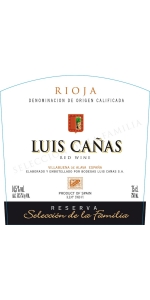
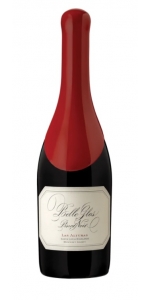
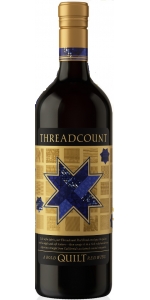
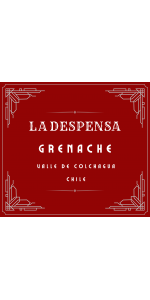
-150x300.jpg)
